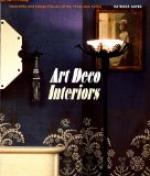PLATE XVIII
A delightful bit of a room. The furniture, in line, shows a Directoire influence. The striped French satin sofa and one chair is blue, yellow and faun, the Brussels tapestry in faded blues, fauns and greys. Over a charmingly painted table is a Louis XV gilt applique, the screen is dark in tone and has painted panels.
The rug, done in cross-stitch, black ground and design colours, was discovered in a forgotten corner of a shop, its condition so dingy from the dust of ages that only an expert would have recognised its possibilities.
[Illustration: Corner of a Drawing Room, Furniture Showing Directoire influence]
The Louis XIV, XV and XVI periods in furniture are all related. Rare brocades, flowered and in stripes, bronze mounts as garlands, bow-knots and rosettes, on intricate inlaying, mark their common relationship. The story of these periods is that gradually decoration becomes over-elaborated and in the end dominates the Greek outline.
The three Louis mark a succession of great periods. Louis XIV, though beautiful at its best, is of the three the most ornate and is characterised in its worst stage by the extremely bowed (cabriole) legs of the furniture, ludicrously suggestive of certain debauched courtiers who surrounded the Grande Monarch.
Louis XV legs show a curve, also, but no longer the stoggy, squat cabriole of the over-fed gallant. Instead we are entranced by an ethereal grace and lightness of movement in every line and decoration. Here cabriole means but a courtly knee swiftly bending to salute some beauty’s hand. So subtly waving is the curving outline of this furniture that one scarcely knows where it begins or ends, and it is the same with the decorations—exquisitely delicate waving traceries of vines and flora, gold on gold, inlay, or paint in delicate tones. All this gives to the Louis XV period supremacy over Louis XVI, whose round, grooved, tapering straight legs, one tires of more quickly, although fine gold and lovely paint make this type winning and beloved.
From Louis XVI we pass to the Directoire, when, following the Revolution, the voice of the populace decried all ostentation and everything savouring of the superfluous. The Great Napoleon in his first period affected simplicity and there were no longer bronze mounts, in rosettes, garlands and bow-knots, elaborate inlaying, nor painted furniture with lovely flowering surfaces; in the most severe examples not even fluted legs! Instead, simple but delicately proportioned furniture with slender, squarely cut, chastely tapering legs, arms and backs, was the fashion. In fact, the Directoire type is one of ideal proportions, graceful outlines with a flowing movement and the decoration when present, kept well within bounds, entirely subservient to the main structural material. One feels an almost Quaker-like quality about the Directoire, whether of natural wood or plain painted surface.




